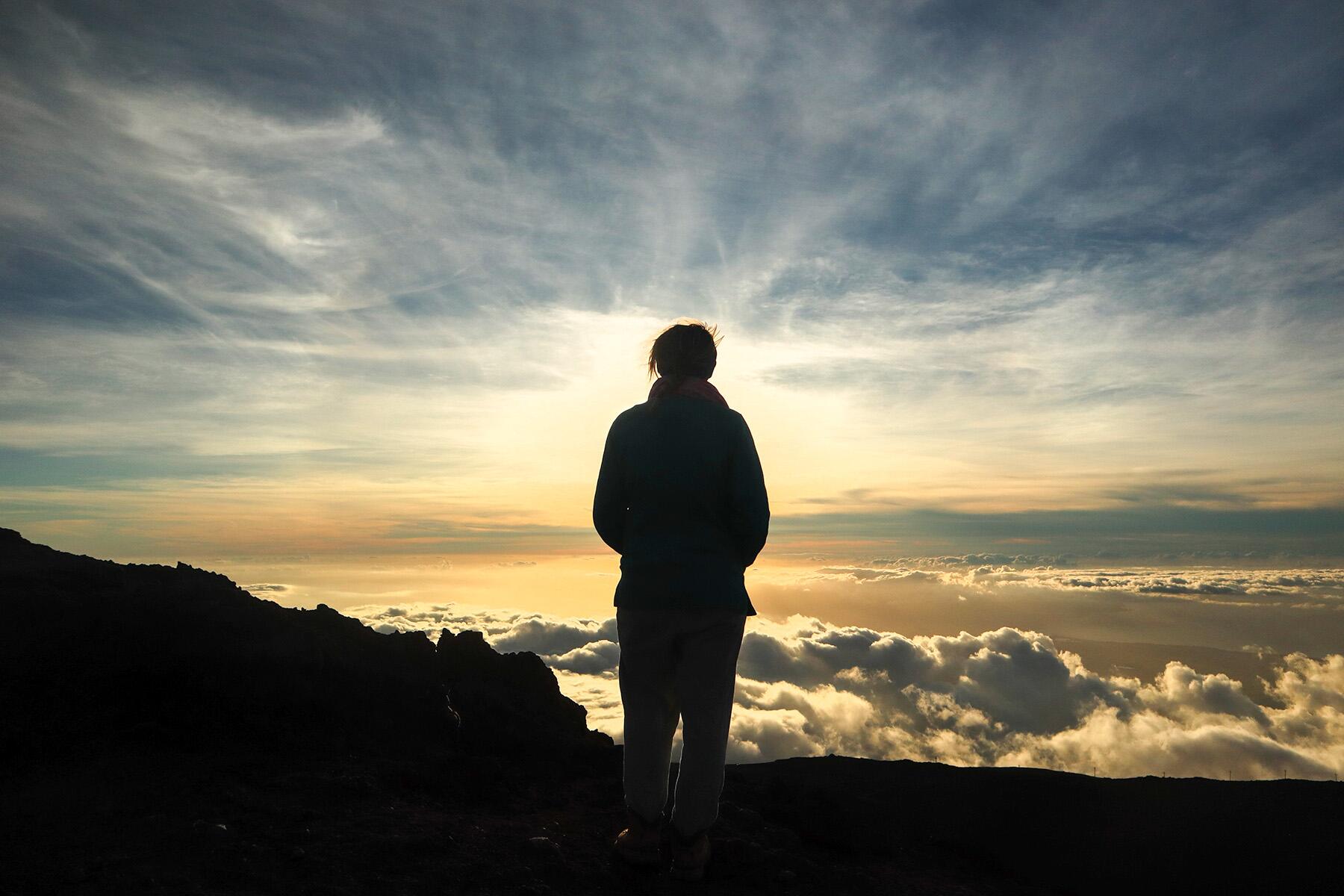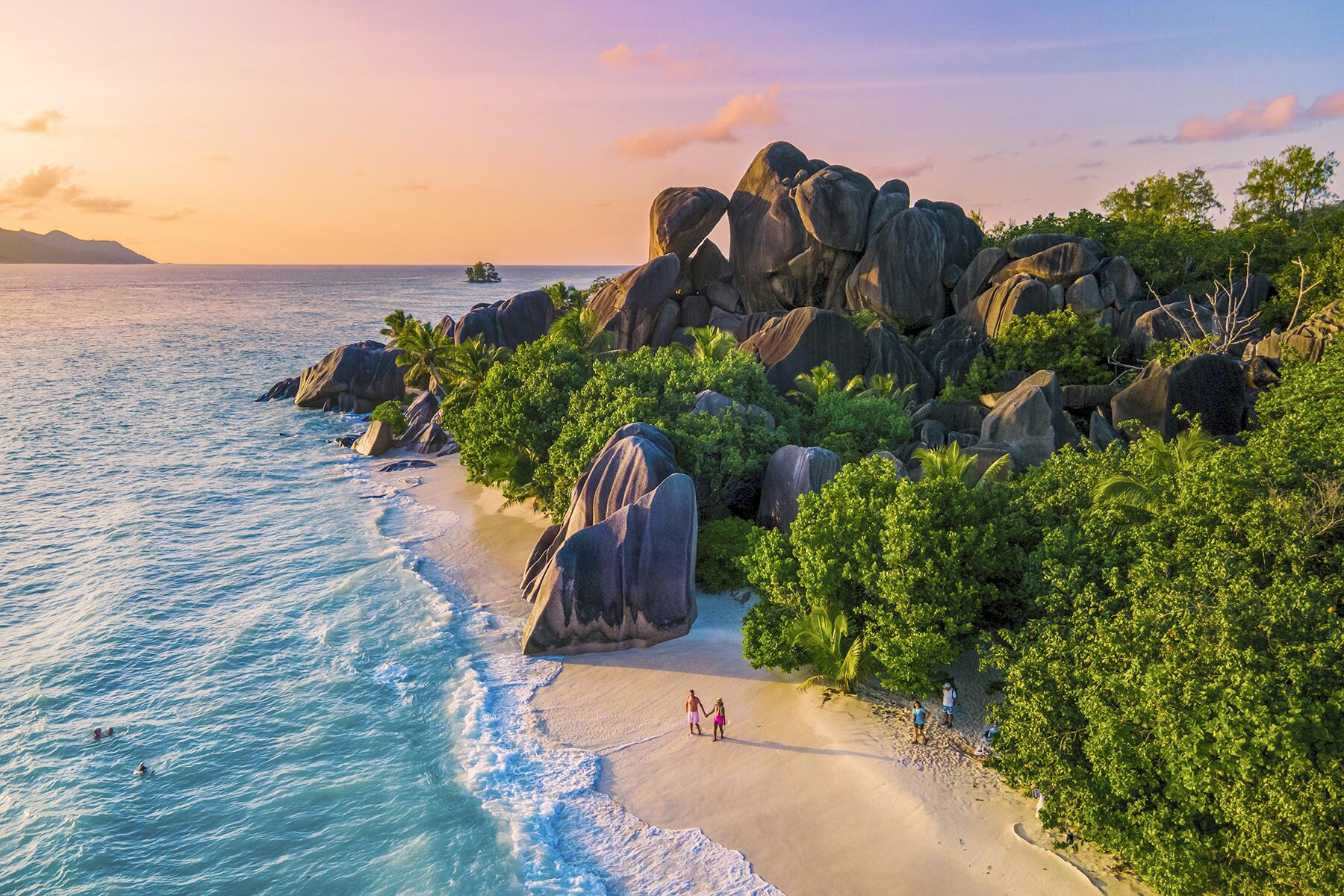They're some of the most iconic places in the world, but they're not always easy to experience.
The pandemic has caused a lot of travel dreaming. Maybe your bucket list has even grown longer over the last year. Many of you might now be thinking about relaxing on a Grenadian beach or, now that Europe is planning to reopen to vaccinated travelers, sampling every Portuguese egg tart in Lisbon. It’s also likely that you’re considering some of the dozen dream destinations on the below list.
At most places in the world, it’s easy to pick and choose your activities according to your abilities, avoiding anything that might trouble a bad back, painful joints, less-steady feet, fears of heights, and other concerns that can affect how we travel. As you figure out where to go when, keep in mind the unexpected challenges of these iconic places so that you don’t miss out on what makes them iconic.
Top Picks for You
The Galapagos Islands
WHERE: Ecuador
A Galapagos cruise is by far the best way to see the islands’ unique flora and fauna. But Galapagos cruises are different from regular cruises. Ships are smaller and, generally, less luxurious and comfortable. Despite stabilizers, you’ll notice the seas are rough, particularly during overnight passages between islands.
Kayaking and snorkeling with giant turtles and sea lions are optional, though many people consider it a highlight. But the whole purpose of a trip to Galapagos is to see different islands’ endemic species, and to do that you need to take pangas—Zodiac-style boats—from ship to shore.
Though crew will help, you’ll need balance and agility to get in and out of them on less-than-smooth seas. Landing spots occasionally have a dock, but more likely have uneven and slippery rocks. On my week-long cruise, I lost count of the number of people—of all ages—who took a tumble near the pangas. Plus, you won’t want to miss walking through Galapagos’ lava tubes and fields of lava rock and they require steady feet to avoid a sharp landing.
Machu Picchu
WHERE: Peru
While you may think it’s the high Andean altitude that’s the challenge for seeing Machu Picchu, older people are actually at lower risk for altitude sickness. Plus, at 7,972 feet above sea level, Machu Picchu is below the altitude sickness zone which begins at 8,202 feet (however, Cusco and the Inca Trail are at much higher altitudes—acclimatize accordingly).
Knees and hips are likely to complain about the giant stone steps of Machu Picchu’s tiered ruins. With tickets now allowing entry for just a four-hour period, there’s new pressure to move quickly to explore as much of the site as possible. Hiking poles and walking sticks aren’t allowed, but those needing them are (usually) able to bring them if the tips are rubberized to protect the ancient stones. Note there are few handrails on steps and slopes.
Anyone afraid of heights should skip the climb up Huayna Picchu altogether. And if you have an overactive bladder, know that Machu Picchu has only one bathroom and it’s outside the entrance gates several minutes from the nearest parts of the ruins. Since January 1, 2019, re-entry to the site isn’t permitted so if you have to go, it’s unlikely you’ll be allowed back inside to continue exploring.
Recommended Fodor’s Video
Mountain Gorilla Trekking
WHERE: Rwanda and Uganda
Uganda’s Bwindi Impenetrable Forest—home to half the world’s mountain gorillas—was the most challenging day hike I’ve ever done. The ground is wet, uneven, and covered with waist-high foliage. We used vines to haul ourselves up 75-degree inclines while pushing ourselves up from below with our walking sticks. The easiest way down slopes was often on our butts.
You might get lucky and find your designated gorilla troop an easy half-hour stroll from the trailhead. But you might hike nine hours to find them. Treks in Uganda’s Mgahinga Gorilla Park and Rwanda’s Volcanoes National Park are sometimes easier than Bwindi, though know that many Rwanda treks are at a higher elevation and Rwanda’s permit fees are more than double the cost of Uganda’s.
You can hire a porter ($20/day) to carry your gear and water. They’ll even help push and pull you through tough spots. But your feet still need to carry you there and back. Booking through an established tour operator such as Alluring Africa can increase your chances of getting assigned an easier trek.
Angkor Temples
WHERE: Cambodia
As you’d expect, exploring the ruins in Cambodia’s Angkor Archaeological Park requires you to be on your feet under the hot sun much of the day. Marveling at what was once the world’s largest civilization might distract you from ensuring you don’t trip over a half-buried stone or tree root. But if you’re not comfortable climbing up these century-old temples, you’ll seriously miss out on admiring the intricate Khmer architecture and carvings, not to mention the spectacular views.
Many of the temples’ staircases are very steep with treads smaller than your foot—they were designed that way, to make the climber bow down in respect. Some temples’ steps are so high that many people use their hands to help their struggling knees and thighs. Some of the most harrowing steps, like to Angkor Wat’s third tier, have been covered by modern wood or metal staircases, thankfully with handrails. But they’re still remarkably steep, a bit jiggly, and anyone who’s afraid of heights will have to gather up their courage.
Egypt’s Pyramids
Ancient ruins are generally not great for anyone with sore joints. Going inside some of Egypt’s pyramids means needing to crouch down inside the small and narrow passageways. Some are steeply sloped, with either stairs or wooden slats to keep your feet from sliding. Deep inside the tombs, it’s often hot, stuffy, and, sometimes, smelling of mold.
Turkey’s Underground Cities and Carved Castles
No visit to Turkey is complete without seeing the fairy chimneys and wonders of Cappadocia. The region’s underground cities carved out of tufa rock perhaps as early as the 8th century BCE, were in use hiding their inhabitants until the 1920s. Their existence was rediscovered accidentally in 1963 and a new city was found in 2014.
Most tourists visit Derinkuyu, which accommodated 20,000 inhabitants 18 stories below the ground. You can stand at your full height in most of the explorable rooms but will need to crouch to go through doorways and tunnels (recover afterward with a Turkish hammam). Some of the stairways are in narrow tunnels, steep and without handrails.
Above the surface, Cappadocia also has a few explorable castles. These fortresses were carved in hills of tufa and designed to protect their residents and their livestock. While you won’t have the weighty feeling of several stories of rock above your head, their staircases and ramps tend to be steep, sometimes with a few ladders to climb. Your guide will point out the ankle-breaking booby traps.
Vietnam’s American War Tunnels
Whether you call it the American War or the Vietnam War, most visitors to Vietnam want to learn more about it. Some of Vietnam’s war sites, like Hanoi’s Hỏa Lò Prison and the Mỹ Lai massacre memorial, are easy to visit—at least physically. The underground tunnel system used during the war, however, poses physical challenges for some tourists.
You can learn a lot just by walking through the forest to get to the tunnels. But if it’s important to you to see them from the inside, know that government signs warn you not to enter if you’re over the age of 70; if you have cardiovascular disease, high blood pressure, asthma, arthritis, or rheumatism; if you’re afraid of darkness or small spaces; or if you’ve had too much alcohol.
Regardless, you’ll want to make sure that you’re not claustrophobic and that you can handle walking in a crouched position. You can visit both the Vĩnh Mốc Tunnels—lived in by civilians—and the more famous Củ Chi Tunnels used by the Viet Cong. Most tours go to Củ Chi’s Bến Đình site, which has more tourist infrastructure, but you can also go to less-crowded Bến Dược where fewer tunnels are enlarged to accommodate tourists.
Namibia’s Immense Sand Dunes
Namibia is an ideal country for a safari (in addition to the expected wildlife, it also has rare desert elephants). Namibia also has the world’s largest sand dunes, including 1,066-foot-high Big Daddy. Watching the sun rise from the top of one of these orange-red dunes is part of the Namibian experience.
Most people climb Dune 45, half as high as Big Daddy and the most easily accessible from hotels (the closest is Kulala Desert Lodge, a 26-minute drive). Climbing these dunes is surprisingly long and slow, even without the added pressure of trying to beat the sun. Your feet sink in the soft sand almost to your ankles and you slide back a step or two with every step forward. To avoid sand in your shoes, you might want to kick them off (and then you’ll be grateful that your feet sink, as the sand below the surface is still warm from yesterday’s rays).
The Argentine Side of Iguazú Falls
Iguazú impresses everyone who visits, no matter how well-traveled. There are about 275 different falls, stretching more than a mile and a half in an elongated horseshoe shape—about three times wider than Niagara. An ideal visit means spending one day on the Argentine side and at least a half day on the Brazillian side.
The Brazillian side—Foz de Iguaçu—is easier. There’s a shuttle to the falls and viewing platforms are easily accessible and paved. There’s an elevator at the end near the fourteen falls of the Devil’s Throat and you can avoid almost all of the stairs if needed.
On the Argentine side, you take a train to the falls. Those with limited mobility can stay along the top of the falls on metal catwalks, wooden boardwalks, and paved paths but may miss out on up-close views and seeing the river below. Within the rainforest, many of the paths and stairs are steep and slippery.
Petra
WHERE: Jordan
The 2,000-year-old Nabatean ruins in Petra are one of the easier dream destinations. If you only want to see the famous Treasury, it’s a one-mile downhill walk through the Siq canyon (uphill and in the sun on the way back). Donkeys, camels, and horses are available for hire, but—as with all animals kept for tourists—there are varying degrees of ethical treatment. A limited number of golf carts are available too, but need to be reserved in advance.
If you have your heart set on seeing all of the 23-square-mile site, be sure you’re okay with a lot of walking in the sun with few opportunities for shade. You won’t want to miss the Monastery, but know it has 850 stairs.
Teotihuacán
WHERE: Outside Mexico City
This pre-Aztec city was once the Americas’ largest city and is now Mexico’s most-visited archeological site (avoid the crowds by arriving before it opens at 9 a.m. and by skipping Sunday, which has free entry for Mexican citizens). Likely constructed around 100 BCE, the Aztecs later named Teotihuacán “City of the Gods.”
While it is possible to admire the ruins at ground level along the three-mile-long Avenue of the Dead, most people want to see the views from the top of the Pyramid of the Sun, the third-tallest pyramid in the world. The stairs are steep (if scared of heights, you might prefer a crowded time when your only view is of the person in front of you) and the “handrails” are low rope. Keep in mind there’s no shade whatsoever at mid-day.
The Towers of Sagrada Familia
WHERE: Barcelona, Spain
Antoni Gaudí’s fantastical Barcelona cathedral, Sagrada Familia has been under construction since 1882 and is expected to be completed in 2026. While most of it is wheelchair accessible, anyone prone to vertigo or who has difficulty with stairs will want to skip the towers. That’s too bad—they’re a marvel in of themselves and give you views of the basilica’s intricate facade and of the city.
You take the elevator up each tower, but the only way down is a 504-step coiled staircase designed to evoke a snail’s shell. Much of it is sin handrail. When choosing which tower to see (you need a separate ticket), know that the steps of the Nativity Tower are slightly wider than the Passion Tower’s. Before being allowed in the elevator up, several older travelers report staff making them prove they’re capable of the descent by demonstrating they can jump up and down a few times. Kids under six aren’t allowed up either.





